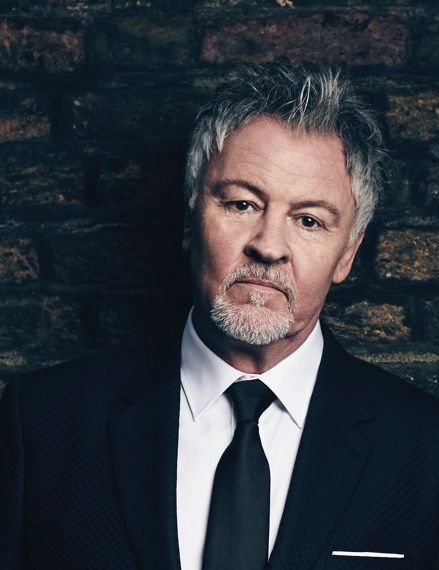It's been more than 20 years since Paul Young last released a solo record in the UK. Good Thing is an eclectic mix of soul numbers by classic artists, but songs that you might not have heard. And it works. It’s very nicely put together, and the performances are right out of the top drawer, from the individual players to the vocalist himself. In short, we reckon this solo hiatus has done him no harm. Headliner catches up with him at his label HQ in London.
Paul Young’s first solo album, No Parlez, was released in 1983, and included the two mega-hits, Love of the Common People, and that superb cover of Marvin Gaye’s Wherever I Lay My Hat. It made him a major household name in the UK. Young performed at Live Aid two years later, and delivered two more UK number one albums, and a string of Top 10 singles. Now he’s back with Good Thing, which is the album he’s always wanted to make. Put together by renowned American producer, Arthur Baker, the record benefits from some fantastic musicianship, courtesy of James Halliwell.
“I’m really glad Arthur got James Halliwell involved in the project; he is a great player, but as a kid, he went to see The Who at Cornwall Colosseum, and we were the support act! James had seen us on The Old Grey Whistle Test,” smiles Young. “He said the whole brass section and the overall sound blew his mind, so it’s really nice for me to work with someone who’s inspired by me, and it must be a bit of a kick for him too, I suppose.”
Indeed. Conversation turns to the type of songs on the record, and why Young selected them.
“If I’m giving away one of my tricks, it’s by not picking well known songs; people are less likely to draw comparisons, so straight away you’re in a better place,” he says. “Having said that, I hate going for a well know song anyway, as you’ll know: Wherever I Lay My Hat is a good example; I like to go after unusual tracks which people didn’t expect me to do. And for this record, why go for the obvious ones if the definitive version is there? So that’s why I picked L.O.V.E by Al Green, as everyone knows Let’s Stay Together and Tired of Being
Alone. I like to go under the surface a little bit, you know?”
It’s a pretty up tempo record, which is unusual for Young; and he’s certainly stamped his own mark on certain songs: Words, for example, has a minor chord change that wasn’t there in the Bee Gees’ original. Was this the whole ethos behind the production?
“Yes, basically; I love Bee Gees songs, so I decided to take the Al Green approach to Words with the addition of the violin,” Young explains. “I reckon Al might have gone with a violin too, if he’d have done that song; it gives it that human quality, and it becomes more melancholic.”
So why now, after all these years, has Young decided to make this record? It seems the working relationship with Arthur Baker was a key factor.
“It was, for sure. Because I’ve always done eclectic music, I wasn’t sure what a Paul Young album was, really, or should sound like,” Young admits. “So when Arthur came up with this idea of taking as many songs as possible from one publishing house, he said the natural choice for me should be songs from the East Memphis catalogue. I thought that was perfect, as it would also take me back to where I started, to a certain extent; I’ve almost placed myself back at the tail end of the Q-Tips going into the Paul Young solo stuff all over again!”
The album has taken roughly two years to complete, as it was tough to get it up and running; but the finished article sounds terrific. So it was worth the wait, then?
“Yes, I think it was; the original plan was that the publishing company that owns the East Memphis catalogue were going to finance the whole album, but something broke down, and they only wanted to pay for the ones they thought they might use, so the project went on ice for a while; then we had a couple of false starts, plus Arthur has other projects he works on, so it went on for a good two years,” Young reveals. “It also meant we were able to sit on the songs, though; we could think about how to improve them over time, and that actually ended up being a great thing.”
Like many people, I’d heard certain rumours over the years that Young’s voice isn’t what
it once was. After listening to a few of the tracks on Good Thing, however, I realised that they were indeed, just rumours. The vocal performances on the record are soulful, and fantastic. It sounds to me like Young was very much in the zone.
“Yeah, all my hits were really high, but even my speaking voice is low,” Young laughs. “I got the chance to use that on this record, which I rarely did years ago. If you listen to Ku Ku Kurama on No Parlez, [sings: ‘close to me now, drive me’], you’ll know what I mean. So I’ve got to show it off a little bit, which the record company at the time never let me do! But I like to have a bit more versatility to my game. I’d redo the vocals as the album evolved, as I knew I could do it better. The same thing happened when I was recording The Secret of Association (1985); sometimes my first takes were the keepers, but other songs I would sing it once, and as they would add instruments, I’d keep updating it. So once Good Thing was less programmed and more played, I always wanted to give it another go.”
